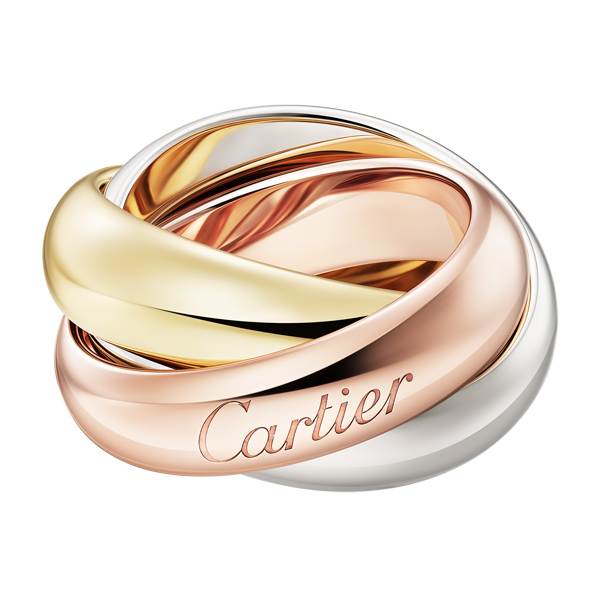Cartier Trinity and the Power of Three

(CARTIER)
You’d hardly forget your first brush with the Cartier Trinity. That initial experience of sliding the Trinity ring onto a finger is a mind-blowing gesture as the three intertwining elements take their turns to glide smoothly over the skin. It’s an unexpected sensation. You wouldn’t think that something as solid as gold would move in such a way; seemingly without friction.
It’s even more impressive to know that the Cartier Trinity was created 100 years ago. The earliest iteration of a three-band ring by Cartier was released in 1924. That included three intertwined bands crafted in platinum, rose gold and yellow gold. A bracelet was also made in the same year. Owing to the ring’s minimalist design—many variations of colours and materials were developed over the years. However, it went on to be seen on several men in the art world from the 1930s onwards. French poet Jean Cocteau was famous for stacking two rings on his little finger, while actors Gary Cooper and Alain Delon opted for one on the same digit.



(CARTIER)
It wasn’t until 1997 that Cartier officially adopted the now-iconic “Trinity” moniker for all of its three-band, three-gold jewellery. Although the first “Trinity” was seen earlier, in Vogue in 1925.
Since then, the creativity surrounding the Trinity has been limitless. Proportions of the Trinity have been rendered in a few different ways over the years, and the materials have only got more precious. In 2004, a Trinity bracelet was introduced as an XL version and paved completely with pink, yellow, and white diamonds. A 2011 version saw the use of black ceramic and white gold for a stunning monochromatic piece. And who could forget 2022’s collaboration with Chitose Abe of sacai where the Trinity was spliced into six modular creations, including one that could be worn as an earring or a ring?
There’s no reason to doubt that Cartier would up the ante for its icon’s 100th anniversary. Deviating from the roundness of its original—a shape that has stayed relatively consistent throughout the decades—the latest Trinity has been transformed into a cushion-shaped masterpiece. This rendition, while more geometric in expression, stays true to the original’s mechanics, sliding with the same naturalness. The cushion-shaped version comes in the classic and large model rings all in gold or paved with diamonds, a bracelet as well as a pendant.
Pushing the limits of its creativity further is a modular Trinity ring. This creation allows the wearer to turn the three intertwining bands into a single wide, large band. In the latter state, the ring can unfold to reveal its diamond interior and function as seamlessly as the Trinity ring we’re all familiar with. “Like a Kumiki puzzle, we envisioned the Trinity bands interlocked as one structure, and then designed in reverse to deconstruct them into three. This naturally creates multiple ways to wear the same ring, which makes this Trinity so contemporary and adds to its universality,” says Cartier’s director of watchmaking and jewellery design Marie-Laure Cérède.
But of course, celebrating an icon also means paying homage to the past. Cartier has also brought back the Trinity bracelet but this time, supersized it in an XL version with an equally maximalist ring to match. Now, how’s that for a three-pronged approach to celebrating a three-band icon?








Recent Comments